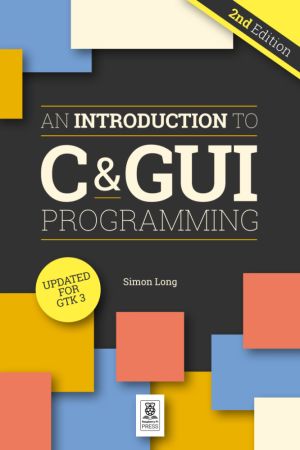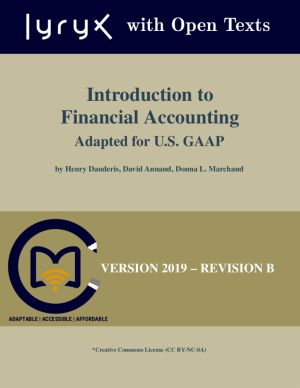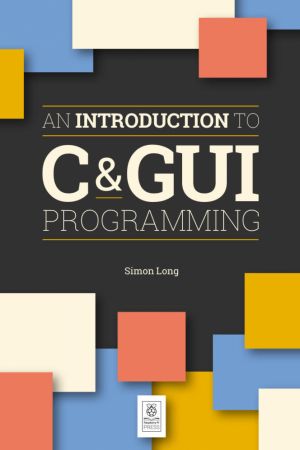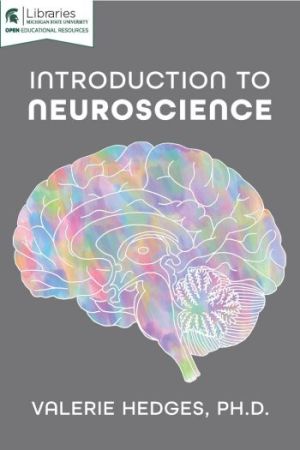Introduction to Neuroscience
by Valerie Hedges
DescriptionTable of ContentsDetailsHashtagsReport an issue
This first edition will guide students through the structure and function of nervous system cells and nervous system structures, signaling within the nervous system, and introduce various sensory systems. A future edition that will be completed in spring 2023 will include the somatosensory system, motor systems, motivation and reward, stress, sex and the brain, emotions, nervous system disorders, learning, and memory.
In addition, new original content has been added to supplement what was provided in the above texts. The text includes many images and animations throughout and will be divided into shorter chapters that focus on a single topic. As this text is meant for undergraduate students, the writing is aimed at students that have not taken a neuroscience course before. Neuroscience terminology will be defined throughout the text through the use of the embedded Glossary terms to help with ease of reading. Additionally, important terms are bolded. Each chapter will end with an interactive quiz for student self-evaluation of the content. 






Book Description
Introduction to Neuroscience is designed for undergraduate students enrolled in introductory neuroscience courses. This book specifically targets students enrolled in Introduction to Neuroscience 1 and Introduction to Neuroscience 2 at Michigan State University and primarily contains topics covered in those courses.This first edition will guide students through the structure and function of nervous system cells and nervous system structures, signaling within the nervous system, and introduce various sensory systems. A future edition that will be completed in spring 2023 will include the somatosensory system, motor systems, motivation and reward, stress, sex and the brain, emotions, nervous system disorders, learning, and memory.
In addition, new original content has been added to supplement what was provided in the above texts. The text includes many images and animations throughout and will be divided into shorter chapters that focus on a single topic. As this text is meant for undergraduate students, the writing is aimed at students that have not taken a neuroscience course before. Neuroscience terminology will be defined throughout the text through the use of the embedded Glossary terms to help with ease of reading. Additionally, important terms are bolded. Each chapter will end with an interactive quiz for student self-evaluation of the content.
This open book is licensed under a Creative Commons License (CC BY-NC-SA). You can download Introduction to Neuroscience ebook for free in PDF format (49.9 MB).
Table of Contents
Part I
Introduction to Neuroscience
Chapter 1
What is Neuroscience?
Part II
Cells of the Nervous System Structure & Function
Chapter 2
Cells of the Nervous System: The Neuron
Chapter 3
Cells of the Nervous System: Glia
Chapter 4
Visualizing Cells of the Nervous System
Chapter 5
Ion Movement
Chapter 6
Membrane Potential
Chapter 7
The Membrane at Rest
Chapter 8
Electrical Activity in Neurons
Chapter 9
Action Potentials
Chapter 10
Voltage Clamp
Part III
Neuronal Communication
Chapter 11
Synapse Structure
Chapter 12
Steps in Synaptic Signaling
Chapter 13
Neurotransmitter Identification and Action: Ionotropic Receptors versus Metabotropic Receptors
Chapter 14
Introduction to Small Molecule Neurotransmitters
Chapter 15
Neurotransmitters: Acetylcholine
Chapter 16
Neurotransmitters: Amino Acid Neurotransmitters (Glutamate, GABA, Glycine)
Chapter 17
Neurotransmitters: Biogenic Amines (Serotonin, Histamine)
Chapter 18
Neurotransmitters: Catecholamines (Dopamine, Norepinephrine, Epinephrine)
Chapter 19
Neurotransmitters: Atypical Neurotransmitters
Chapter 20
Drug and Toxin Effects
Part IV
Nervous System Organization
Chapter 21
Anatomical Terminology
Chapter 22
Brain Structure Differentiation
Chapter 23
Brain Anatomy
Chapter 24
Additional Structures of the Nervous System
Chapter 25
Imaging the Living Brain
Chapter 26
Spinal Cord Structure
Chapter 27
Peripheral Nervous System
Part V
Sensory Systems
Chapter 28
General Principles of Sensory Systems
Chapter 29
Visual System: The Eye
Chapter 30
Visual System: Central Processing
Chapter 31
Auditory System: The Ear
Chapter 32
Auditory System: Central Processing
Chapter 33
Vestibular System
Chapter 34
Gustatory System
Chapter 35
Olfactory System
Chapter 36
Somatosensory Systems
Chapter 37
Touch: The Skin
Chapter 38
Touch: Central Processing
Chapter 39
Pain and Nociception
Book Details
Title
Introduction to Neuroscience
Subject
Science and Mathematics
Publisher
Michigan State University
Published
2022
Pages
576
Edition
1
Language
English
ISBN13 Digital
9781626101227
ISBN10 Digital
1626101221
PDF Size
49.9 MB
License

Related Books

This workbook was designed for the Introduction to Archaeology (ANTH 2339) class in the Department of Sociology and Anthropology, University of Texas at Arlington. It was created to provide exercises that supplement and expand on topics and issues raised in lecture. For each major topic, students complete exercises that serve a range of functions; ...

Freshly updated for GTK3, the 2nd edition of An Introduction to C & GUI Programming will teach you all you need to know to write simple programs in C and start creating GUIs, even if you're an absolute beginner.
The first half of the book is an introduction to C, and covers the basics of writing simple command-line programs. The second ...

Introduction to Financial Accounting is intended for a first course in introductory financial accounting. It has been extensively edited by Athabasca University and reflects current International Financial Reporting Standards (IFRS). A corporate approach is utilized versus beginning with a sole proprietorship emphasis and then converting to a corpo...

Introduction to Financial Accounting: U.S. GAAP, was intended for a first course in introductory financial accounting. It focuses on core introductory financial accounting topics that match pre-requisite requirements for students advancing to intermediate financial accounting. A corporate approach is utilized versus beginning with a sole proprietor...

Even if you are an absolute beginner, this book will teach you all you need to know to write simple programs in C and start creating GUIs.
The first half of the book is an introduction to C, and covers the basics of writing simple command-line programs. The second half shows how to use the GTK user interface toolkit with C to create feature-rich...

This book is exceptional in the sense that it provides an introduction to law in general rather than the law of one specific jurisdiction, and it presents a unique way of looking at legal education. It is crucial for lawyers to be aware of the different ways in which societal problems can be solved and to be able to discuss the advantages and disad...

